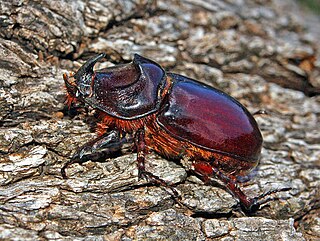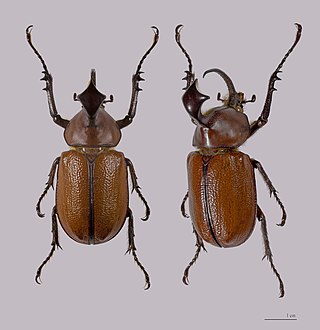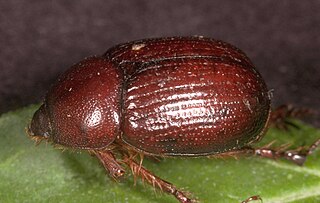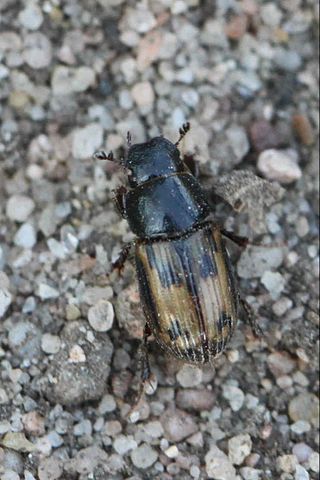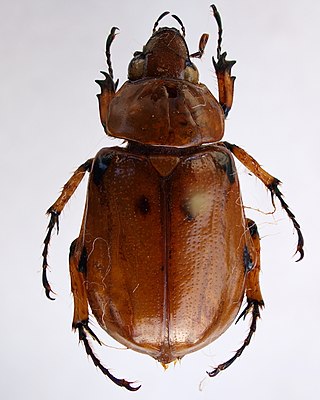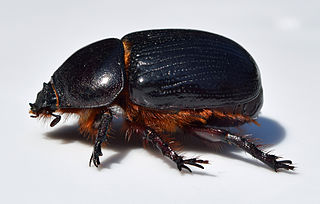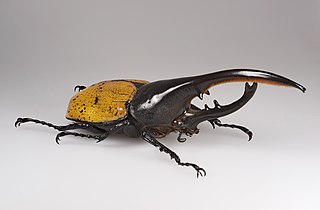| Oryctini | |
|---|---|
 | |
| Oryctes nasicornis | |
| Scientific classification | |
| Domain: | Eukaryota |
| Kingdom: | Animalia |
| Phylum: | Arthropoda |
| Class: | Insecta |
| Order: | Coleoptera |
| Family: | Scarabaeidae |
| Subfamily: | Dynastinae |
| Tribe: | Oryctini Mulsant, 1842 |
| Synonyms | |
| |
Oryctini [2] is a tribe of beetles in the Dynastinae (family Scarabaeidae). [3]
Contents
This tribe perhaps best describes the term "rhinoceros beetles" and includes important pest species in the type genus Oryctes . However, the name may also be applied to genera in the Phileurini and related tribes.
Members of the tribe Oryctini are large, strongly build beetles with a thick cuticle. The adults are typically between 25 and 60 mm long and most often dark brown to black. The size and also the structures on the head and pronotum of males can depend on the suitability of the breeding medium where the larvae develop. [4]
More specifically, the members of the tribe can be separated from other tribes of dynastid beetles by a combination of features. The most important ones are: [5] [4]
- They have an elongated body with the sides being nearly parallel, in contrast to more rounded forms in other tribes.
- Like in some other groups of dynastids, there is a clear difference between the morphology of males and females with males having more armoured structures on head and pronotum.
- The labial palps arise from the sides of the labium.
- The tibiae of the fore legs have a normal length, are not extended and are armed with three or four large teeth.
- The tibiae of the hind legs end in several processes, which can be teeth-like or finger-like.
Among the Dynastinae, the tribe Pentodontini is most similar to the Oryctini. However, both tribes can usually be separated by the tip of the tibiae on the hind legs. [5]
The genera and species of Oryctini are widely distributed around the world but are especially common in the neotropical region. [5] [4] [6] They often breed in decaying organic matter like rotting tree trunks or accumulations of compost. The adults feed on rotting fruits or tunnel into the stems of monocots like sugarcane or palm trees. They are active during the night and are often attracted by light. [4]




